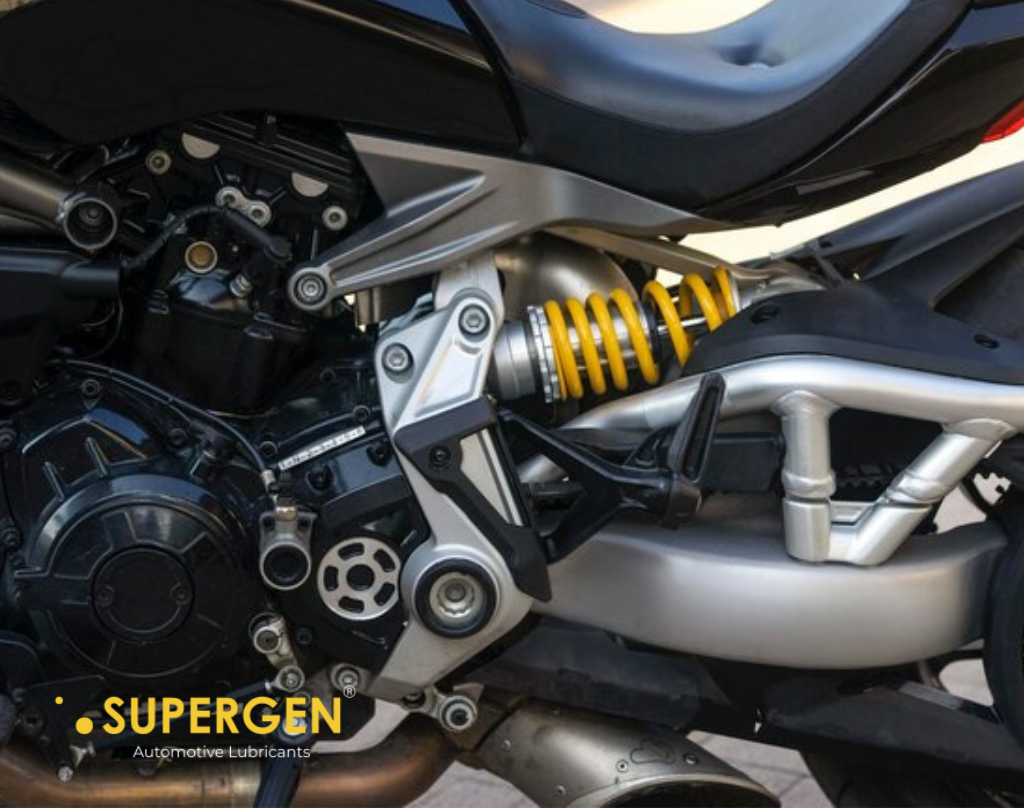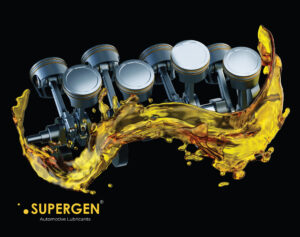In the sphere of motorcycle upkeep, few tasks carry as much weight as oil changes. Ensuring your engine is well-lubricated is pivotal for its longevity and peak functionality.
However, the question remains what constitutes the most suitable oil change interval for your motorcycle? Let’s delve into this subject, examining various aspects and shedding light on common inquiries.
How frequently should I replace bike engine oil?
The frequency of oil changes hinges on several variables, encompassing the bike type, its usage pattern, and the oil type employed. As a rule of thumb, most manufacturers advocate for an oil change every 3,000 to 5,000 kilometers or every six months, whichever transpires earlier. Nonetheless, this can fluctuate based on individual circumstances. Here are various categories and the respective oil change intervals.
Race Bikers:
For race bikers who subject their motorcycles to high-performance demands on tracks or competition circuits, frequent oil changes are paramount. The intense heat and stress experienced during racing accelerate oil degradation and increase the likelihood of engine wear.
Race bikes often operate at higher RPMs, leading to greater engine stress and heat buildup. Therefore, race bikers typically change their engine oil after every race weekend or every few track sessions, which could translate to as little as 500 to 1,000 kilometers between changes.
Some professional racers might even change their oil after every race or practice session to ensure optimal engine performance and reliability.
Commercial Use
Motorcycles used for commercial purposes, such as delivery services or rideshare operations, are subjected to constant use and often cover long distances daily. In such cases, frequent oil changes are necessary to maintain engine health and reliability.
Commercial users typically adhere to a stricter maintenance schedule, changing the engine oil every 2,000 to 3,000 kilometers or every two to three months, depending on usage intensity. Regular oil changes help prevent premature engine wear and ensure the motorcycle remains operational for extended periods without encountering mechanical issues.
Normal Bike Usage
For riders who use their motorcycles for daily commuting, recreational rides, or occasional weekend outings, the recommended oil change interval is typically less frequent compared to race bikers or commercial users.
Most manufacturers suggest changing the engine oil every 3,000 to 5,000 kilometers or every six months, whichever comes first, for bikes used under normal conditions. This interval allows for sufficient lubrication and protection of engine components without requiring excessively frequent maintenance.
However, it’s essential for riders to monitor their bike’s performance and oil condition regularly to ensure timely maintenance and prevent any issues arising from prolonged oil use.
Environmental Factors
Environmental conditions can also impact the frequency of oil changes. Riding in extreme temperatures, such as very hot or very cold climates, can accelerate oil degradation and necessitate more frequent changes. Similarly, riding in dusty or polluted environments can introduce contaminants into the engine oil, requiring more frequent replacements to maintain optimal engine performance.
Riders should consider these factors when determining their oil change intervals and may need to adjust their maintenance schedule accordingly.
How can I determine if my bike necessitates an oil change?
Several indicators signify that your motorcycle is due for an oil change:
Oil Appearance
Fresh engine oil boasts a translucent, amber hue. As time progresses, it darkens as it accumulates dirt and particles. If you observe a significantly darker color, it’s an indicator that an oil change is in order.
Engine Audible Cues
Properly lubricated components operate noiselessly. Unusual sounds such as knocking or ticking emanating from your engine could signal insufficient lubrication, signifying the need for an oil change.
Elevated Engine Temperature
Inadequate lubrication can lead to escalated friction, resulting in heightened engine temperatures. If your motorcycle is running hotter than usual, it might be indicative of the need for an oil replacement.
Decreased Performance
Old or degraded oil can impede engine performance, manifesting as sluggish acceleration and diminished power output.
At what mileage should I consider an engine oil change?
The ideal mileage interval for an oil change is contingent on various factors. For motorcycles deployed in routine commuting, a range of 3,000 to 5,000 kilometers is customary. However, if your motorcycle undergoes more rigorous riding or operates in extreme conditions like off-road or track environments, you might need to change the oil more frequently, typically around every 2,000 to 3,000 kilometers. Here is a list of bike categories and their respective mileage for oil change.
Sport Bikes
Sport bikes, known for their high-performance engines and aggressive riding characteristics, typically require more frequent oil changes due to the demanding nature of their usage. Riders who push their sport bikes to the limit on twisty roads or racetracks subject the engine to higher stress levels, necessitating shorter oil change intervals. For sport bikes, it’s common to change the engine oil every 3,000 to 4,000 kilometers to ensure optimal lubrication and engine performance.
Cruiser Bikes
Cruiser bikes, designed for long-distance cruising and relaxed riding, generally have larger engines with lower RPMs compared to sport bikes. As a result, they experience less engine stress and heat buildup, allowing for longer intervals between oil changes. Cruiser bike riders typically change their engine oil every 5,000 to 6,000 kilometers to maintain engine health and longevity while enjoying extended periods of trouble-free riding.
Adventure Bikes
Adventure bikes, built for versatility and capable of handling a wide range of terrain, often endure varied riding conditions, from highway cruising to off-road exploration. The diverse nature of their usage may lead to faster oil degradation, especially if the bike is frequently exposed to dust, dirt, or water crossings.
Adventure bike owners typically opt for oil changes every 4,000 to 5,000 kilometers to ensure consistent performance and reliability across different riding environments.
Commuter Bikes
Commuter bikes, utilized for daily transportation in urban or suburban settings, usually cover moderate distances at lower speeds compared to other bike types. While they may not undergo the same level of stress as sport or adventure bikes, commuter bikes still benefit from regular oil changes to maintain engine efficiency and longevity.
Riders of commuter bikes typically change their engine oil every 4,000 to 6,000 kilometers, depending on the specific model and usage conditions.
Dual-Sport Bikes
Dual-sport bikes, designed to be equally at home on and off-road, require oil changes at intervals that strike a balance between the demands of both environments. Riders who frequently tackle challenging off-road trails or engage in long-distance adventure touring may opt for shorter oil change intervals, typically every 3,000 to 4,000 kilometers.
Those primarily using their dual-sport bikes for commuting or casual off-road riding may extend the interval to 4,000 to 5,000 kilometers.
Environmental Factors
In addition to bike type and usage patterns, environmental factors such as temperature and humidity can influence the frequency of oil changes. Riding in extreme heat or cold can accelerate oil degradation, necessitating more frequent changes to maintain optimal engine performance. Similarly, riding in dusty or humid conditions may require shorter oil change intervals to prevent contamination and preserve engine health.
Can I adhere to ‘Every Two Years’ motorcycle oil change schedule?
While waiting two years between oil changes isn’t generally advisable, exceptions do exist. If your motorcycle has remained inactive for an extended duration with minimal usage, you may not reach the mileage threshold for an oil change but could still necessitate replacement due to oil degradation over time.
In such instances, it’s recommended to change the oil at least once annually, even if the mileage limit hasn’t been met.
Is a ‘Every Six Months’ oil change schedule beneficial?
Executing an oil change for your motorcycle every six months is a prevalent suggestion, especially if your riding frequency or distances covered are inconsistent. Regular oil changes guarantee that your motorcycle’s engine remains adequately lubricated and safeguarded from wear and tear, irrespective of usage patterns.
What type of oil is optimal for motorcycle engines?
Selecting the appropriate oil for your motorcycle is paramount for optimal performance and longevity. Several factors influence this decision, including viscosity, additives, and manufacturer directives.
Viscosity
Refer to your motorcycle’s manual for the recommended viscosity grade. Common grades include 10W-40, 15W-50, and 20W-50, with the first number indicating the oil’s viscosity in cold temperatures and the second number signifying viscosity at operating temperatures.
Additives
Opt for oils specifically formulated for motorcycles as they often encompass additives tailored to enhance performance and shield against high temperatures and engine stress.
Manufacturer Recommendations
Certain motorcycle manufacturers advocate for specific oil brands or formulations tailored to their engines. Adhering to these recommendations can ensure compatibility and optimal performance.
Is changing the oil filter necessary when conducting an oil change?
Indeed, it’s imperative to substitute the oil filter each time you change your motorcycle’s engine oil. The oil filter assumes a pivotal role in capturing contaminants and debris, thwarting them from circulating through the engine and causing harm. Neglecting to replace the oil filter can compromise engine performance and longevity, nullifying the benefits of fresh oil.
Conclusion
Determining the most suitable oil change interval for your motorcycle entails considering various elements, encompassing usage patterns, mileage, and environmental conditions. Consistent oil changes are indispensable for preserving engine health and performance, so adhere to manufacturer guidelines and vigilantly monitor your motorcycle’s condition to ensure it remains in optimal shape for years to come.








